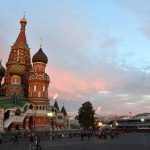Kenya from the Air (25.07.18)
So how do you imagine Kenya in East Africa? Arid and sparse, or lush plantations with pockets of development?

Although I have travelled the length and breadth of the country by land, there is no doubt that the-eye-in-the-sky view afforded by flying in one of the small safari-link low-level aircraft allows for an altogether different perspective. Offering all manner of landscapes with a rich blend of colours, shapes and sizes, it stretches to the far horizon like the brightly lit pattern of a dress tartan.
Climbing from Wilson Airport, it soon becomes obvious why the capital is known as the Green City. With Nairobi acting as the central hub, flights soar off into different directions as if following the spokes of a wheel. The immediate views are of the city’s expanding suburbs, which combine the new smarter private housing developments with Africa’s largest sprawling slum, Kibera.

The dramatic landscape that unfolds from there on depends on the direction you take. The equatorial regions to the north incorporate everything from arid, tinder-box bush through to meandering rivers and high-altitude scenery. Travelling from west to east you can enjoy grandstanding views from the eastern shores of Lake Victoria, Rift Valley, upper highlands, South-Western Mau and Ol-Pusimoru Forest Reserves, Great Lakes, Aberdares, Mt. Kenya and Meru, Kora and Rahole parks and reserve.
Similarly, the landscape from south to north varies from the greener Maasai Mara Reserve on the southern Tanzanian border, all the way up to the brutally dry Turkana desert-scape near the Ethiopian border.

Kenya, covering 581,309 km2 (2½ times the size of the UK), enjoys all manner of scenery. The cooler climate near Nairobi produces savannah grasslands, which peaks with the snow-capped summits of Mt Kenya (5,199m). Tea and coffee growing country is further west in the central highlands and Rift Valley regions. Lake Victoria, the world’s largest freshwater lake, borders a more temperate and forest-dominated landscape.

Rightfully known for its fabulous wildlife and wilderness safari opportunities, the bush supports a fragile yet extensive wildlife system. This in turn alters as you fly eastwards towards the Indian ocean coast line.
Views from above help in the understanding that agriculture is not only a major employer, but also makes Kenya an international tea, coffee and fresh flower exporting heavyweight. Lush plantations and well-organised poly-tunnel-style developments hug the landscape like giant blankets.

These bird’s eye-views are unique in that they offer such diversity of inland regions over such a small stretch of landscape.
Furthermore the rudimentary landing strips and airports highlighted how the skipping-stone-flights, that connect the country together, can stretch to the furthest and remotest regions.





Nairobi Wilson Airport Departure Lounge.





Edge of Kibera slum, outskirts Nairobi.

Keekorok Airport Building, Mara.























